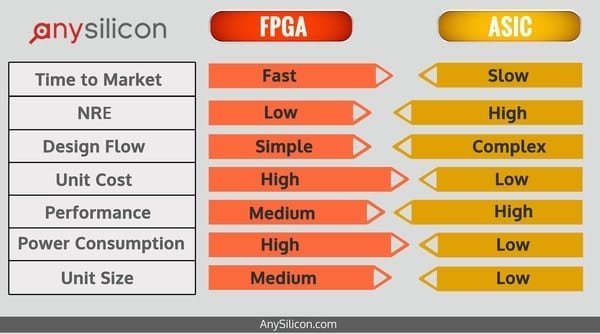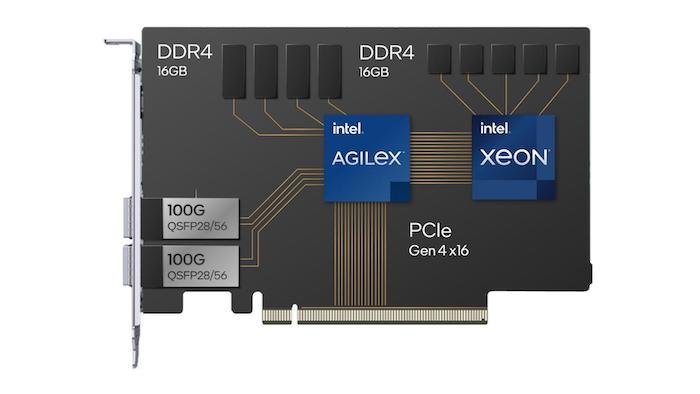This week is Intel's FPGA Day, a yearly event where Intel releases a plethora of FPGA-centric products, including infrastructure processing units (IPUs), network interface cards (NiCs), and FPGAs.

An example benefits of using FPGAs vs other technology like application-specific integrated circuits (ASICs). Image used courtesy of Any Silicon
This year's event has seen the release of some new technologies, and one that particularly stands out is the announcement of new partners for developing FPGA IPUs.
In this article, we'll look at what IPUs are from Intel's perspective, the partnership, why Intel is doing it, and the need Intel is trying to fill in the industry.
What is an Infrastructure Processing Unit?
An IPU is a term coined by Intel earlier this year (2021) at their Six Five Summit.
Intel defines an IPU as a programmable networking device that can securely accelerate, oversee, and manage infrastructure functions in a data center. By intelligently managing system-level infrastructure resources, an IPU hopes to allow cloud and communication service providers to reduce overhead and free up the central processing unit (CPU) for more pressing tasks.

Intel's vision for an IPU. Image used courtesy of Intel
Intel's vision for an IPU is a device containing dedicated functionality that will accelerate modern applications.
To this end, the IPU will largely rely on an FPGA to make the device customizable to user needs. So far, Intel's flagship IPU product is its Oak Springs Canyon platform. This device, in particular, relies on Intel's Agilex FPGA family along with a Xeon processor.
Intel’s New Partnerships
This week, at Intel’s FPGA Day, Intel announced a collaboration with three new partners to help develop and expand Intel’s IPU ecosystem.

Diagram of Intel’s Oak Springs Canyon platform. Image used courtesy of Intel
The new collaboration consists of the cloud-based companies Inspur, Ruijie Networks, and Silicom, each individually working with Intel to help design and develop new FPGA-based IPUs for cloud and networking customers. Each of the three companies will be working with intel’s Oak Springs Canyon platform, contributing in the following ways:
- Inspur: A Chinese cloud computing provider, Inspur will build and design new IPU offerings using Oak Springs Canyon. The goal is to offer customers new, more efficient, and flexible solutions.
- Ruijie Networks: This company intends to use Oak Springs Canyon to extend Intel's FPGA-based IPU portfolio with 100 GbE and 200 GbE options.
- Silicom: This partnership with Intel seeks to create a unique IPU based on the Oak Springs Canyon platform, which can achieve 2x100 GbE while maintaining high performance.
Intel’s Platform
One of the major announcements for Intels’ FPGA day was the number of collaborations that Intel is engaging in to expand its IPU ecosystem. By broadening this ecosystem, Intel hopes to provide customers with versatile, high-performance solutions for their data centers.
With events like Intel's FPGA Day, it will be interesting to see, not only where Intel takes FPGA technology, but what other technology-centric days that might come out in the future.
